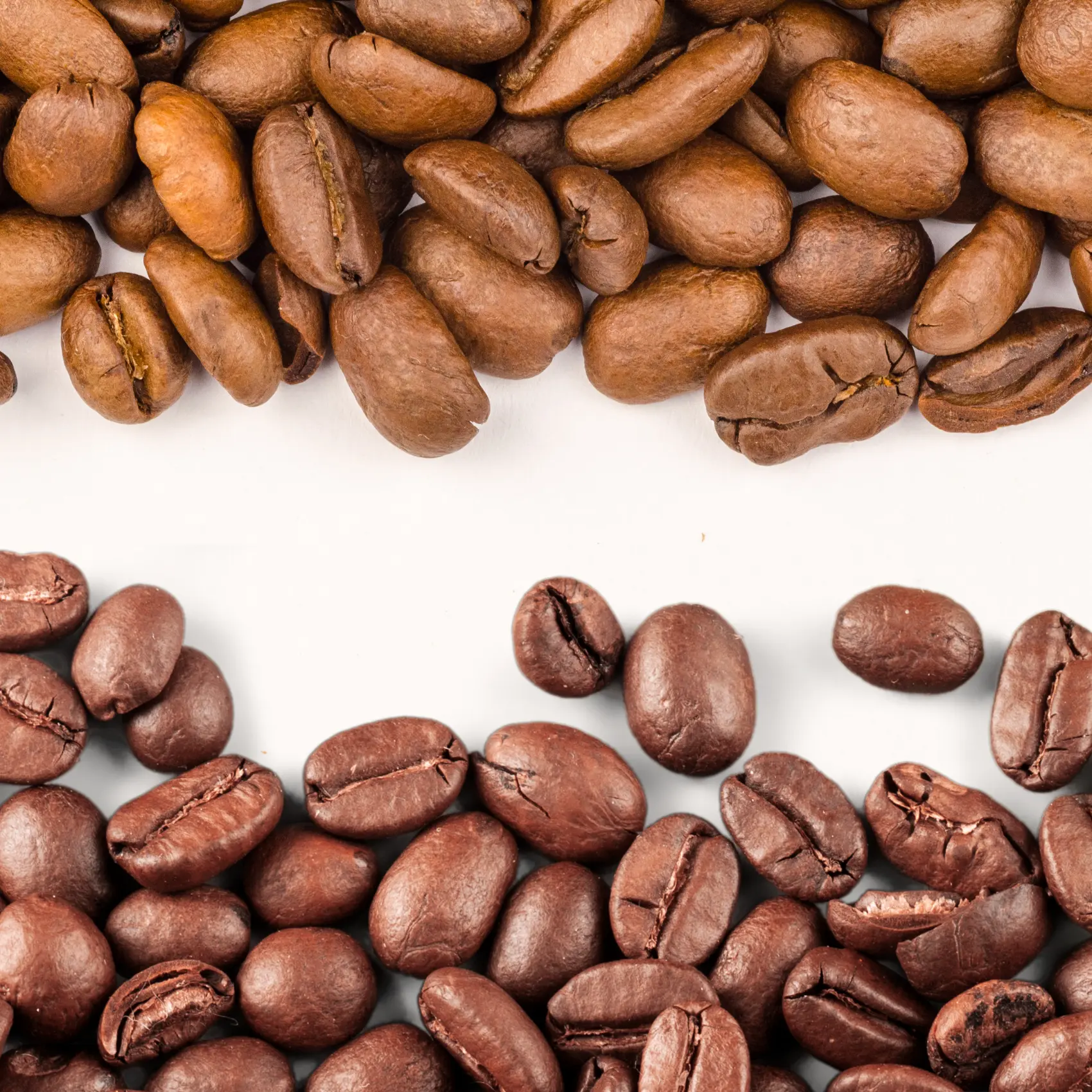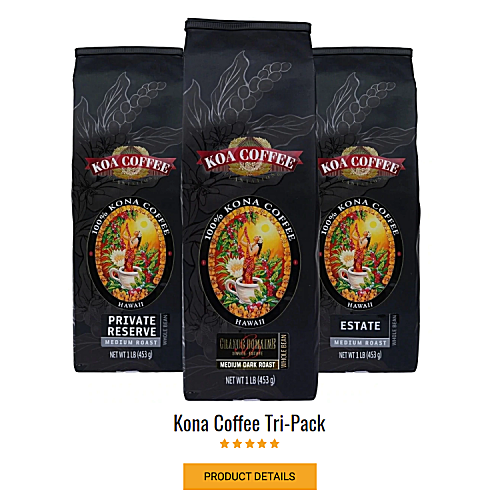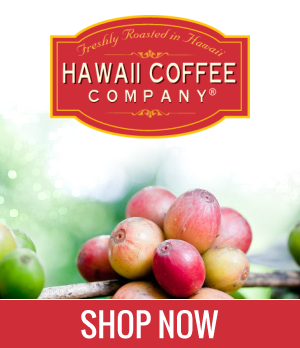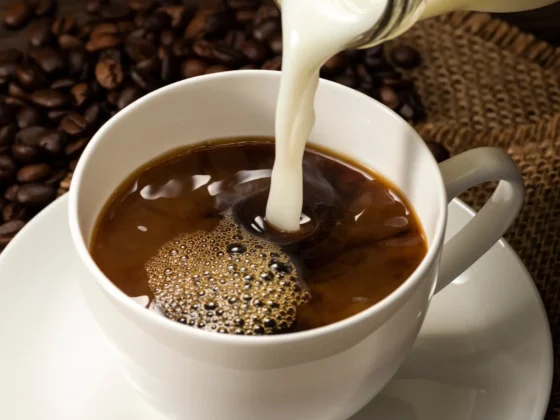In the rich and diverse world of coffee, the debate between light roast vs medium roast coffee is a topic of endless fascination for aficionados and casual drinkers alike. This comprehensive exploration delves deep into the intricate differences in flavors, aromas, and brewing techniques that distinguish these two popular roast levels. Coffee roasting, a transformative process that defines the final character of every cup, plays a pivotal role in shaping these unique profiles. From the bright, nuanced notes of a light roast to the balanced, fuller-bodied medium roast, each brings its own distinct experience to the palate.
This article aims to unravel the complexities of these roasts, examining regional preferences, consumer trends, and the impact of roasting styles on the sensory attributes of coffee. Whether you’re a seasoned coffee connoisseur or a curious newbie, this deep dive into these types of roasts offers valuable insights into one of the world’s most beloved beverages.
Bypass the text and choose the audio version of the article below.
- Introduction & Key Differences
- https://app.mysoundwise.com/tracks/17008274504680557e.mp3
- The Basics of Coffee Roasting
- https://app.mysoundwise.com/tracks/17008275042261223e.mp3
- Flavor Profiles: Light Roast vs Medium Roast
- https://app.mysoundwise.com/tracks/17008275397223171e.mp3
- Health and Caffeine Content
- https://app.mysoundwise.com/tracks/17008275733960078e.mp3
- Brewing Techniques for Optimal Flavor
- https://app.mysoundwise.com/tracks/17008276061034546e.mp3
- The Global Coffee Scene
- https://app.mysoundwise.com/tracks/17008276459822297e.mp3
- Conclusion & FAQs
- https://app.mysoundwise.com/tracks/17008276834696992e.mp3
Medium Roast vs Light Roast: Key Differences
- Flavor Profile: Light roasts feature bright acidity with floral and fruity notes, emphasizing natural bean flavors. Medium coffee roasts offer richer, balanced profiles with caramelized and nutty notes.
- Roasting Process: Light roasts have shorter, cooler roasting, preserving more original flavors. Medium coffee roasts undergo longer, hotter roasting, enhancing complex flavors.
- Body and Acidity: Light roasts present a lighter body and higher acidity, for a vibrant cup. Medium coffee roasts have a fuller body and balanced acidity, offering richness.
- Consumer Preferences: Light roasts are preferred in Nordic countries and parts of the U.S. for complexity, while medium coffee roasts are favored in Europe and North America for balance and versatility. (1)
- Brewing Techniques: Light roasts require higher temperatures and precise grind sizes. Medium coffee roasts are more adaptable to various brewing methods, each highlighting different flavor qualities.
The Basics of Coffee Roasting
Coffee roasting is an art and a science, transforming green coffee beans into aromatic brown beans that are ground, brewed, and enjoyed by millions around the world. This process is not just a mere alteration but a complete metamorphosis of the beans’ chemical and physical properties, defining the unique taste profiles of the coffee we drink.
What is Coffee Roasting?
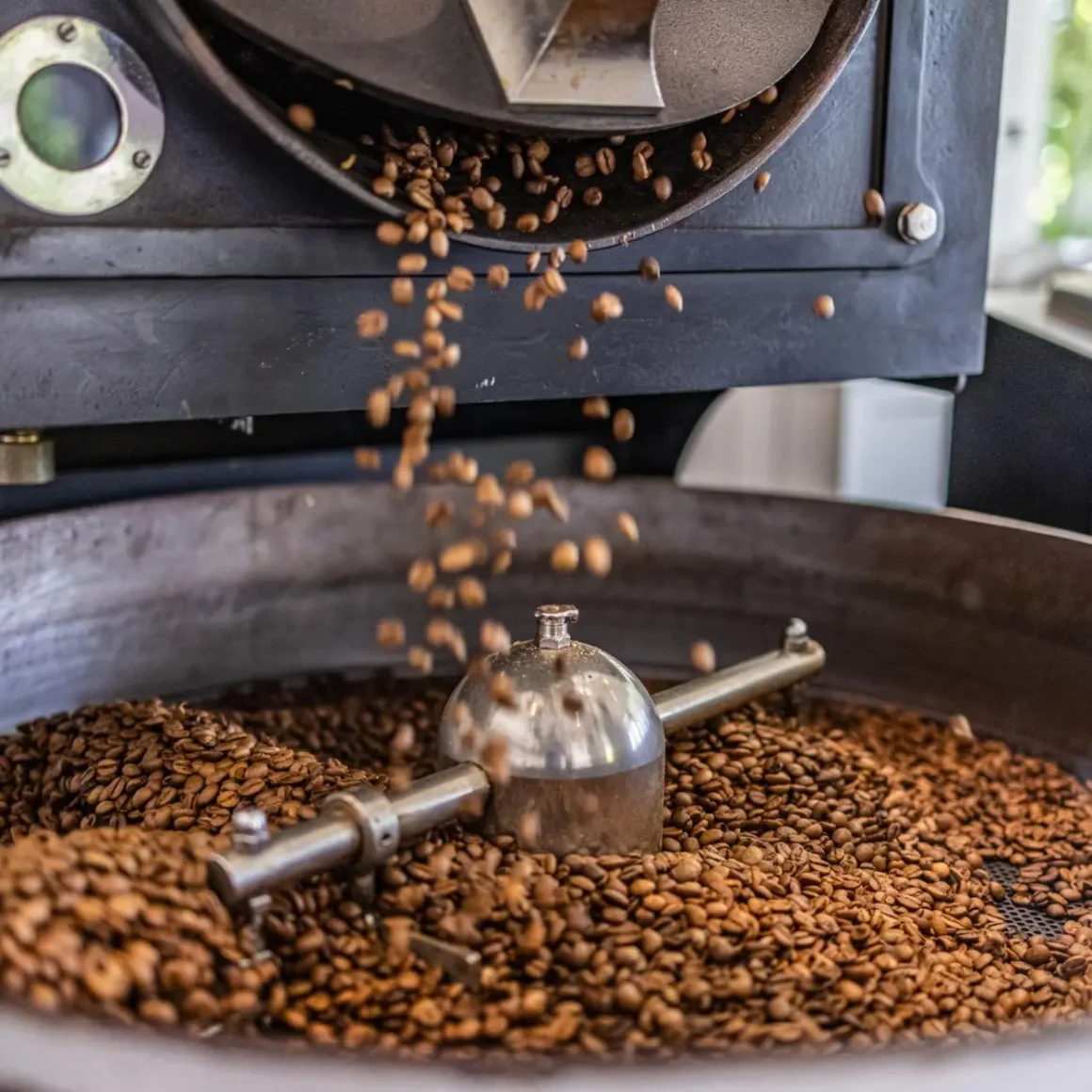
Coffee roasting is a meticulous process that turns the raw, green coffee beans into the flavorful, roasted varieties used in brewing. This process involves:
- Chemical Changes: Roasting initiates a series of chemical reactions, most notably the Maillard reaction, akin to what happens when cooking a steak. This reaction develops the rich flavors and aromas characteristic of coffee.
- Physical Transformations: The beans undergo significant physical changes. They lose moisture, expand in size, and change from green to various shades of brown. The loss of water content, about 16% in unroasted beans, is a critical aspect of this transformation.
- Flavor Development: The roasting process profoundly affects the beans’ flavor. Unroasted beans contain high levels of acids, proteins, sugars, and caffeine but lack the complexity and richness of roasted beans.
- Historical Context: The evolution of coffee roasting has been marked by innovations, from using simple pans in the Ottoman Empire and Greater Persia to modern, sophisticated commercial roasters developed in the 19th century. (2)
Coffee roasting is a transformative process that unlocks the rich flavors and aromas hidden within green coffee beans, making it a crucial step in the journey from bean to cup.
Light Roast Coffee: Characteristics
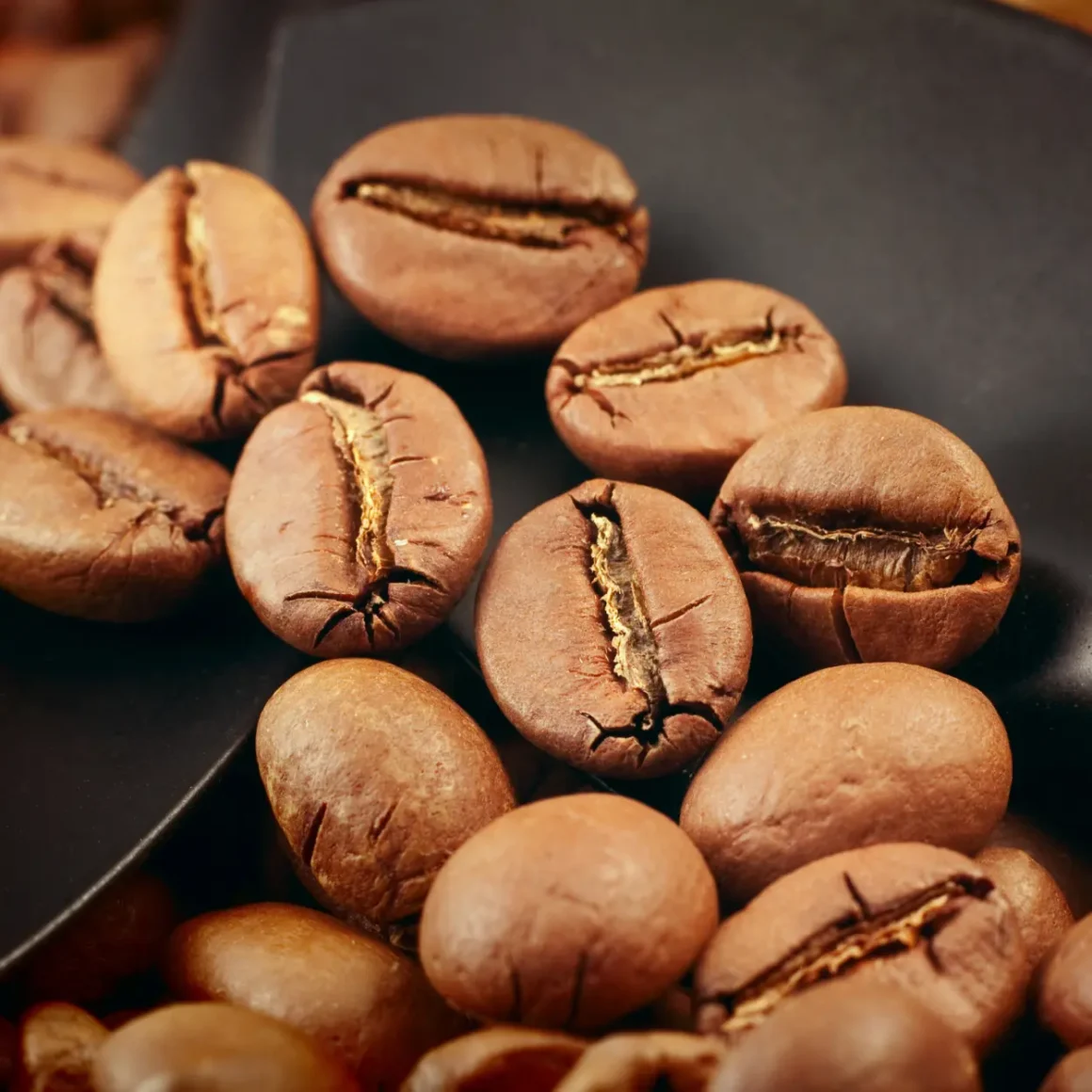
Light roast coffees offer a distinctive experience, characterized by:
- Appearance: These beans are light brown and typically have no oil on their surface. They are slightly moist and denser than darker roasts.
- Flavor Profile: Light roasts preserve the original floral and fruity notes of the coffee. They accentuate the inherent qualities of the beans, offering a vibrant and nuanced taste.
- Acidity and Shelf Life: These roasts are known for their higher acidity and longer shelf life, attributed to the slower release of CO2 during roasting.
The Light roast is celebrated for its ability to showcase the bean’s natural flavors, making it a favorite among specialty coffee enthusiasts. Its unique characteristics offer a coffee experience that is both delicate and rich in complexity.
Medium Roast Coffee: Characteristics
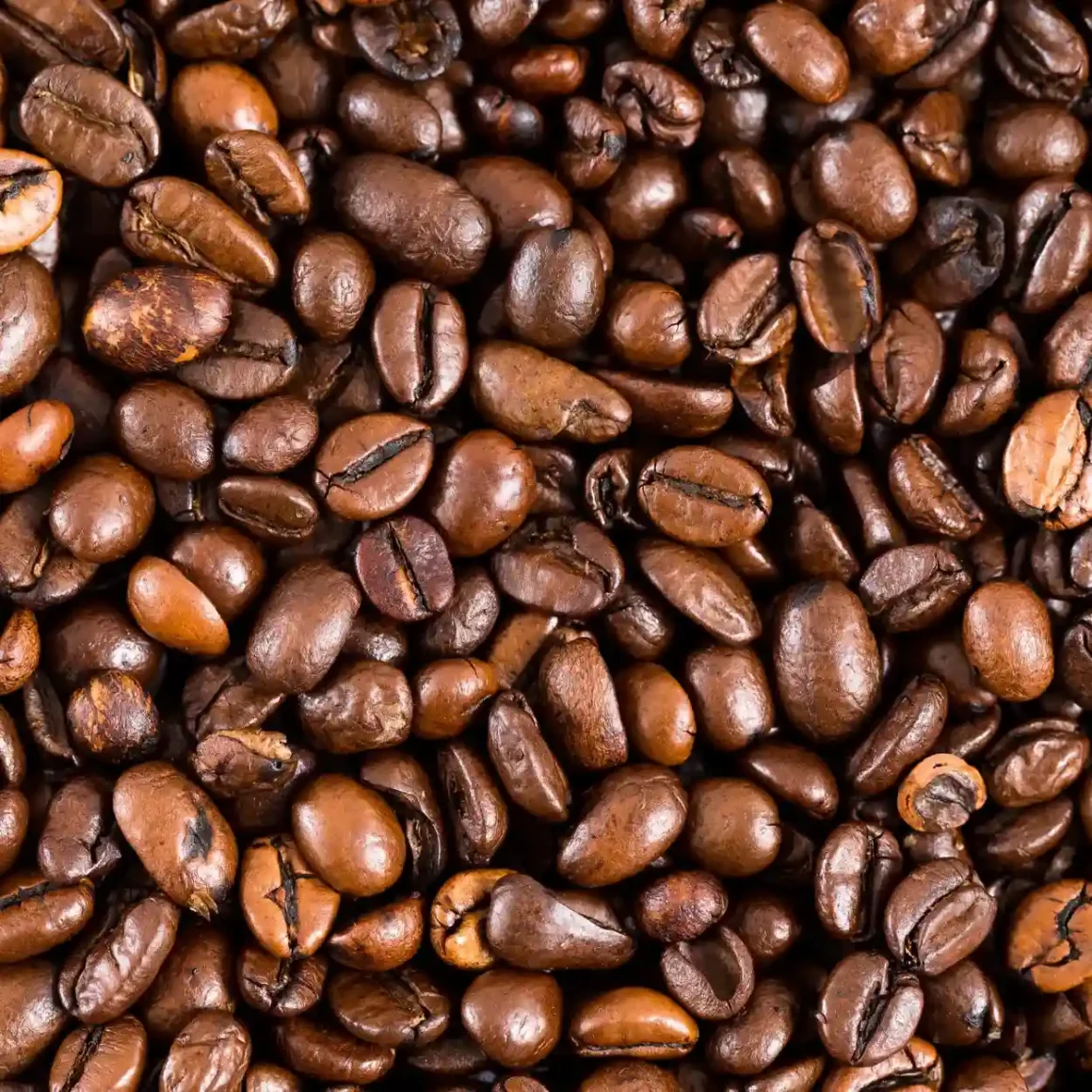
Medium-roasted coffee presents a harmonious balance of flavor, body, and aroma. Its characteristics include:
- Appearance: These types of roasts have a slightly darker color than light roasts, sometimes exhibiting a slight oil sheen when ground.
- Flavor Complexity: Offering a chocolatey and nutty taste, these roasts strike a perfect balance between the original bean flavors and the deeper notes developed during roasting.
- Body and Acidity: These roasts possess a fuller body and a complex flavor profile, balancing sweetness and acidity in a way that appeals to a broad range of coffee drinkers.
Known alternatively as the “regular roast” or “American roast”, medium roasted coffee is often the preferred choice for its well-rounded and approachable flavor profile. It offers a delightful coffee experience, combining the best of both light and dark roasts.
Flavor Profiles: Light Roast vs Medium Roast

Exploring the world of coffee, one quickly discovers the vast differences in flavor profiles between various roasts. Particularly, the distinction between light and medium coffee roasts is not just a matter of color and texture but a deep dive into a spectrum of tastes and aromas. Understanding these differences helps coffee enthusiasts appreciate the subtleties in their favorite brews.
Tasting Notes of Light Roast Coffee
Light roast coffee is often celebrated for its vibrant and complex flavor profile. The characteristics include:
- Bright Acidity: Light roasts are known for their pronounced acidity, which contributes to a lively and refreshing taste.
- Floral and Fruity Notes: These roasts typically exhibit delicate floral and fruity undertones, reflecting the bean’s inherent qualities.
- Light Body: The body of light roast coffee is generally lighter, offering a smooth and easy drinking experience.
- Minimal Roast Flavor: Since these beans are roasted for the shortest time, the roast flavor is minimal, allowing the original flavors of the coffee to shine through.
Light roast coffee is an ideal choice for those who enjoy a nuanced cup that highlights the coffee’s natural flavors and aromas.
Tasting Notes of Medium Roast Coffee
Medium-roasted coffee strikes a balance between the intensity of flavor and the roast character. Its tasting notes include:
- Richer Flavor Profile: Medium roasts have a more pronounced flavor profile compared to light roasts, with a slight reduction in acidity.
- Caramel and Nutty Undertones: These roasts often feature caramelized and nutty flavors, adding depth to the coffee’s taste.
- Medium Body: Medium roasts possess a fuller body than light roasts, contributing to a more satisfying mouthfeel.
- Balanced Roast Flavor: The roasting process is longer for medium coffee roasts, which introduces a balanced roast flavor without overpowering the beans’ original notes.
Medium-roasted coffee is widely appreciated for its well-rounded flavor, making it a versatile choice for various brewing methods and preferences.
Comparative Analysis of Flavor Complexity
When comparing the flavor complexities of light vs medium vs dark roast, several key differences emerge:
- Acidity and Body: Light roasts exhibit higher acidity and a lighter body, whereas medium coffee roasts offer a more balanced acidity with a fuller body.
- Flavor Intensity: Light roasts tend to have a more intense and varied flavor profile, focusing on the bean’s natural characteristics. In contrast, medium roasts provide a more harmonious blend of the beans’ inherent flavors and the caramelized notes developed during roasting.
- Roast Influence: The influence of the roasting process is more pronounced in medium roasts, giving them a richer and more uniform flavor compared to the subtle and diverse notes found in light coffee roasts.
In summary, while light coffee roasts highlight the original flavors of the coffee bean, medium roasts provide a more balanced and enriched taste experience. Both offer unique qualities that cater to different preferences in the world of roasted coffee.
Health and Caffeine Content
The relationship between coffee, its health benefits, and caffeine content has been a subject of much discussion and research. Understanding the variations in caffeine levels and health benefits across different coffee roasts can guide consumers in making informed choices about their coffee consumption.
Caffeine Levels in Light vs Medium Roasts

When it comes to caffeine content, a common question is: does light roast have more caffeine than medium roast? Here’s a closer look:
- Caffeine in Light Roasts: Contrary to popular belief, light roasts may have slightly more caffeine compared to their darker counterpart, ranging around 60mg. (3) This is because the roasting process is shorter, preserving more of the original caffeine content.
- Caffeine in Medium Roasts: These types of roasts undergo a longer roasting process than light coffee roasts, which can slightly diminish their caffeine content. However, the difference is often minimal and can vary depending on the bean type and roasting process.
While light coffee roasts might have a marginally higher caffeine content, the difference between light and medium coffee roasts is often subtle and influenced by various factors beyond just the roasting level.
Health Benefits of Different Roasts

When comparing the health benefits of different coffee roasts, particularly light and medium coffee roasts, it’s essential to understand that despite the variations in flavor and chemical composition due to the roasting process, all roasts share similar fundamental health benefits.
- Antioxidant Properties: Both coffee roasts contain significant levels of antioxidants, though the types and concentrations may vary. Antioxidants like chlorogenic acid, which are more prominent in light coffee roasts, and melanoidins, which increase in medium and darker roasts, contribute to reducing oxidative stress and inflammation in the body.
- Heart Health: Regular coffee consumption, irrespective of the roast, has been linked to a reduced risk of certain cardiovascular diseases. The compounds in coffee can improve heart health by enhancing blood vessel function and reducing inflammation.
- Mental Alertness and Cognitive Function: The caffeine content, although slightly higher in light coffee roasts, is relatively similar across all roasts. This caffeine helps boost mental alertness, improve mood, and potentially enhance cognitive functions over the long term. (4)
Debunking Myths Around Coffee and Health

There are several myths surrounding coffee and health that need clarification:
- Myth: Coffee Stunts Growth: One common myth is that coffee consumption can stunt growth, particularly in children and teenagers. This belief is largely based on the idea that caffeine can negatively impact calcium absorption, which is crucial for bone growth. However, scientific research does not support this claim. Moderate coffee consumption does not have a significant impact on calcium absorption or bone density.
- Myth: Coffee Causes Dehydration: While coffee is a diuretic, moderate consumption does not lead to dehydration. It can be part of your daily fluid intake.
- Myth: Coffee is Addictive: Coffee can be habit-forming due to its caffeine content, but it does not cause addiction in the way drugs do. Moderate consumption is generally safe.
Debunking these myths helps in appreciating coffee’s place in a healthy lifestyle, with the understanding that moderation is essential for reaping its benefits.
Brewing Techniques for Optimal Flavor
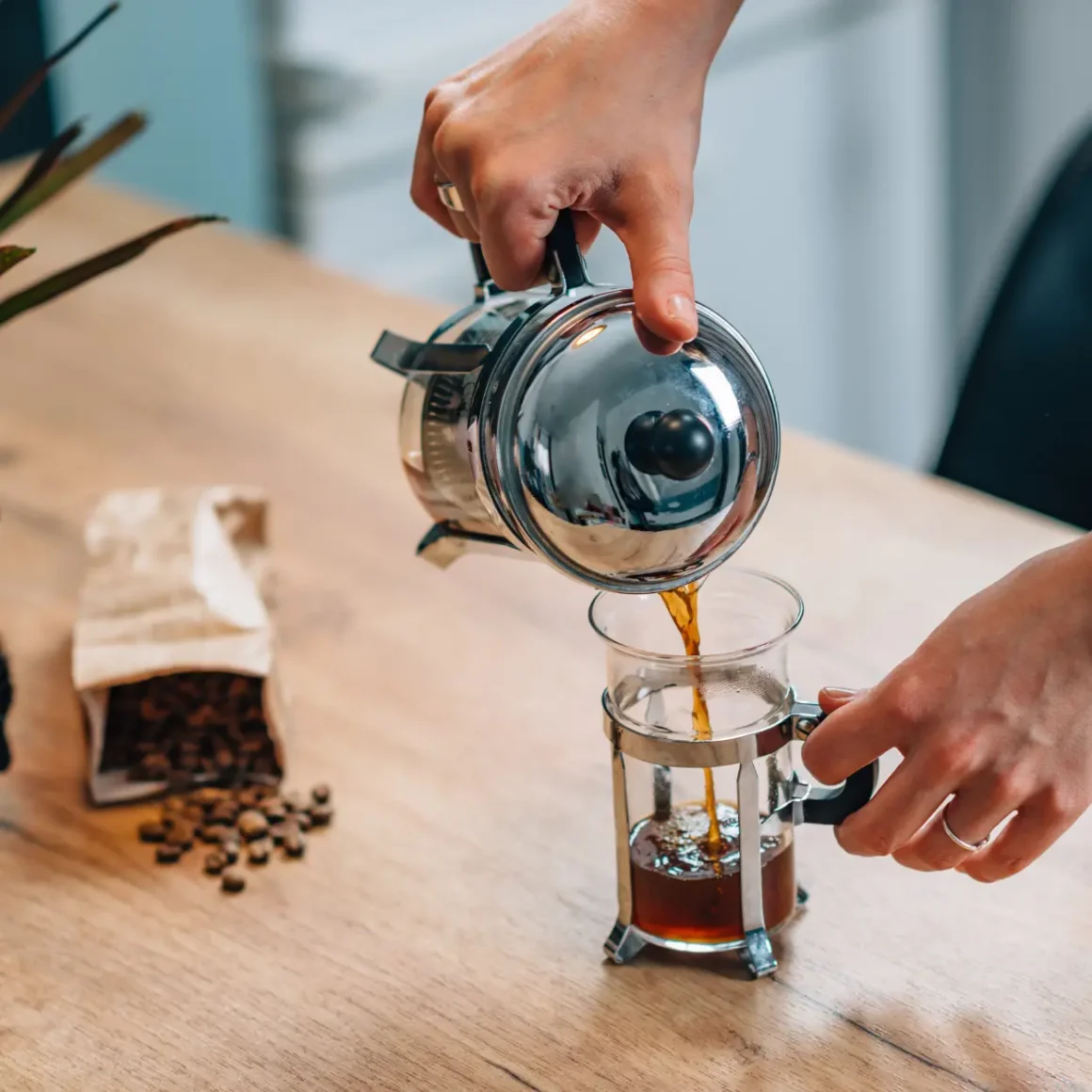
Mastering the art of brewing coffee is essential to unlock the full potential of the beans’ flavor. Whether you prefer the best light roast coffee or the best medium roast coffee, understanding the nuances of brewing techniques can elevate your coffee experience. This guide will delve into the best practices for each roast type and equipment recommendations to help you achieve that perfect cup.
Best Practices for Brewing Light Roast Coffee
Light roast coffee, known for its nuanced and vibrant flavors, requires specific brewing techniques to enhance its unique characteristics. To brew the best light roast coffee:
- Grind Size: A medium-fine grind is generally ideal for light coffee roasts. It allows for optimal extraction without over-extracting the delicate flavors.
- Water Temperature: Light roast coffee benefits from slightly higher brewing temperatures, around 195°F to 205°F, to extract its complex flavors fully.
- Brewing Time: The brewing time should be adjusted according to the method; for example, pour-over methods may take 3-4 minutes, while espresso should be around 25 seconds.
- Freshness: Always use the freshest beans possible. Light roast coffee is particularly sensitive to the loss of flavor due to oxidation.
Brewing light roast coffee with these practices will help in capturing its bright, floral, and fruity notes, ensuring a delightful coffee experience.
Brewing Methods for Medium Roast Coffee
Medium roasted coffee, offering a balance between acidity and body, is versatile and adapts well to various brewing methods. For the best medium roast coffee:
- Grind Size: A medium grind works well for most brewing methods, from drip coffee makers to pour-over.
- Water Temperature: Brewing medium-roasted coffee at temperatures between 195°F and 205°F is recommended to balance its rich flavors and acidity.
- Brewing Time: Similar to light coffee roasts, the brewing time varies based on the method but generally ranges from 4-6 minutes for methods like drip coffee.
- Freshness: Ensure the beans are fresh to retain the roast’s characteristic caramelized and nutty flavors.
Experimenting with different brewing methods like pour-over, Chemex, or French press can bring out the best in medium roast coffee, making it a favorite among coffee enthusiasts.
Equipment and Technique Recommendations
Selecting the right equipment and mastering the technique are key to brewing exceptional coffee. For the best results:
- Best Burr Coffee Grinders: Invest in a high-quality burr grinder for consistent grind size. Burr grinders offer precision and evenness, crucial for extracting coffee’s full flavor.
- Precision Scale: Use a a coffee scale to measure coffee grounds and water accurately. This ensures the right ratio for a balanced brew.
- Temperature-Controlled Kettle: A Gooseneck kettle with temperature control is invaluable for brewing coffee at the optimal temperature.
- Quality Brewing Equipment: Choose a brewing method that suits your taste preferences. Options include Aeropress, pour-over, Chemex, or espresso machines for different roast types.
Implementing these equipment and technique recommendations, along with the specific practices for both roasts, can significantly enhance the quality and taste of your brewed coffee.
The Global Coffee Scene
The coffee scene is a vast and varied tapestry, woven with diverse traditions, preferences, and practices across the globe. From the farming methods to the final brew, each region contributes its unique touch to the world of coffee, creating a rich and ever-evolving culture. Understanding these global influences is key to appreciating the depth and variety of coffee.
Regional Variations in Roasting Styles
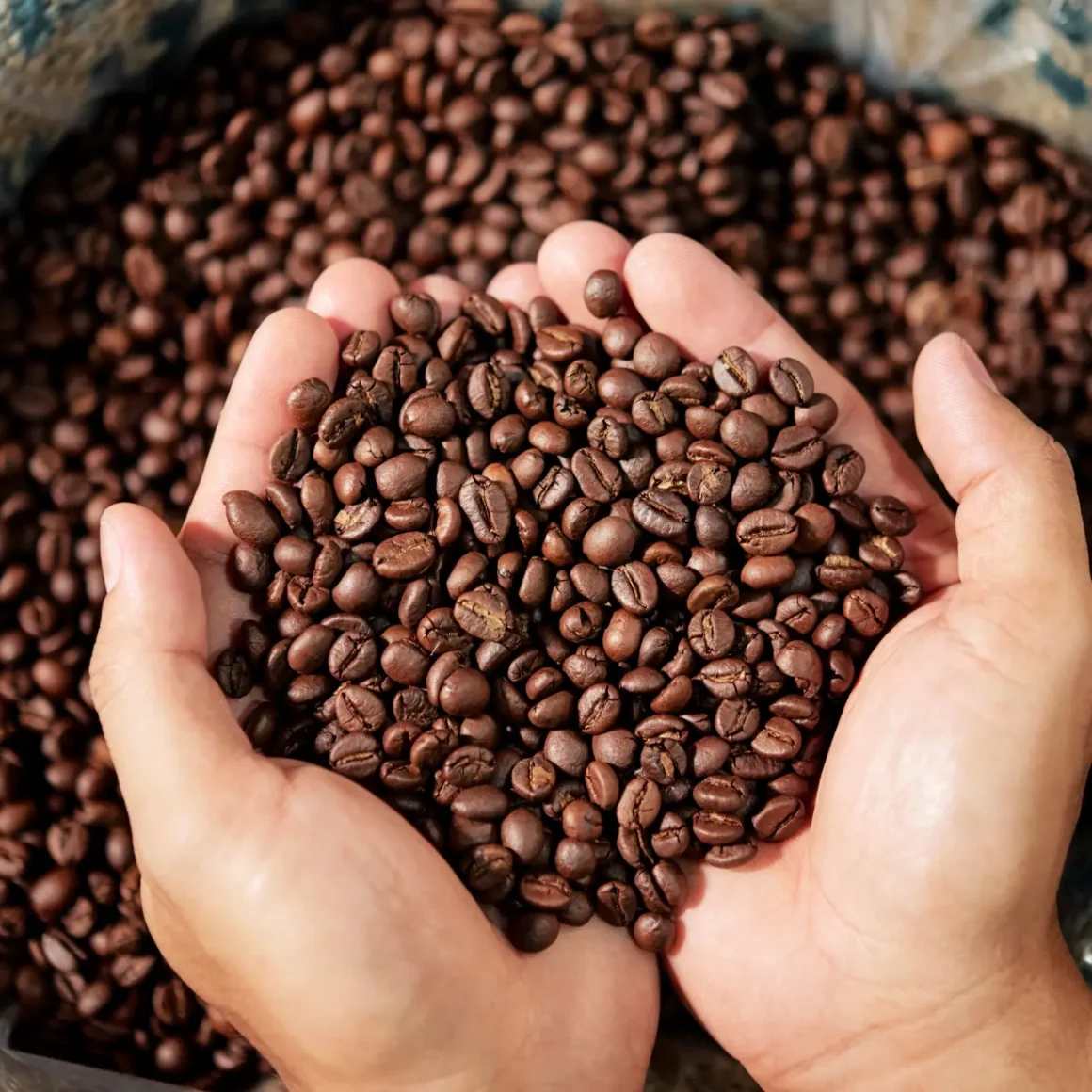
Coffee roasting styles vary significantly from one region to another, each reflecting local tastes and traditions. Here’s a look at some regional roasting styles:
- Scandinavian Roasting: Known for their light coffee roasts, Scandinavian countries emphasize the inherent flavors of the bean, often resulting in a more acidic and fruity profile.
- Italian Coffee Roasting: Italy is famous for its dark roasts, which produce a bold, robust flavor with less acidity, ideal for espresso.
- American Roasting: The United States has a diverse coffee scene, with a tendency towards medium roasts that balance the coffee’s acidity and natural flavors.
- Middle Eastern Roasting: In the Middle East, coffee is often roasted very lightly and then ground with spices like cardamom, offering a unique and aromatic experience.
The variety of roasting styles across different regions highlights the adaptability and versatility of coffee as a global beverage.
Light vs Medium Roast: Consumer Preferences

The preference for either light or medium roast coffee often hinges on an individual’s palate, the intricacies of flavor they seek, and how they perceive the taste and aroma of the coffee.
Light Roast Coffee
- Flavor Profile: Light roast coffee is known for its higher acidity, which imparts a brighter and more vibrant taste. It often showcases more of the original flavors of the coffee bean, including floral, fruity, or herbal notes.
- Preferred Brewing Methods: Enthusiasts who favor these types of roasts often lean towards brewing methods that highlight their complex flavor profile, such as pour-over or Aeropress. These methods allow the subtle flavors and aromas to shine through.
- Consumer Demographic: Those who prefer lighter roasts tend to be coffee aficionados who appreciate the nuanced flavors that originate from the coffee’s origin. They often seek a more ‘pure’ coffee experience, emphasizing the bean’s own character over the roasting process.
Medium Roast Coffee
- Flavor Profile: Medium roast coffee strikes a balance between the original flavors of the bean and the flavors developed during roasting. It has a more balanced acidity, a fuller body than lighter roasts, and a richer, more rounded flavor. The roasting process begins to caramelize the sugars in the beans, adding a slight sweetness.
- Preferred Brewing Methods: Drip coffee and espresso are popular choices for brewing medium coffee roasts. These methods extract the balanced flavors and fuller body effectively, making a more universally appealing cup.
- Consumer Demographic: Medium coffee roasts are often preferred by a broader audience, including those who enjoy a classic coffee taste without the sharp acidity of lighter roasts or the bitterness of dark roasts. It appeals to both casual coffee drinkers and connoisseurs.
Sustainability in Coffee Production
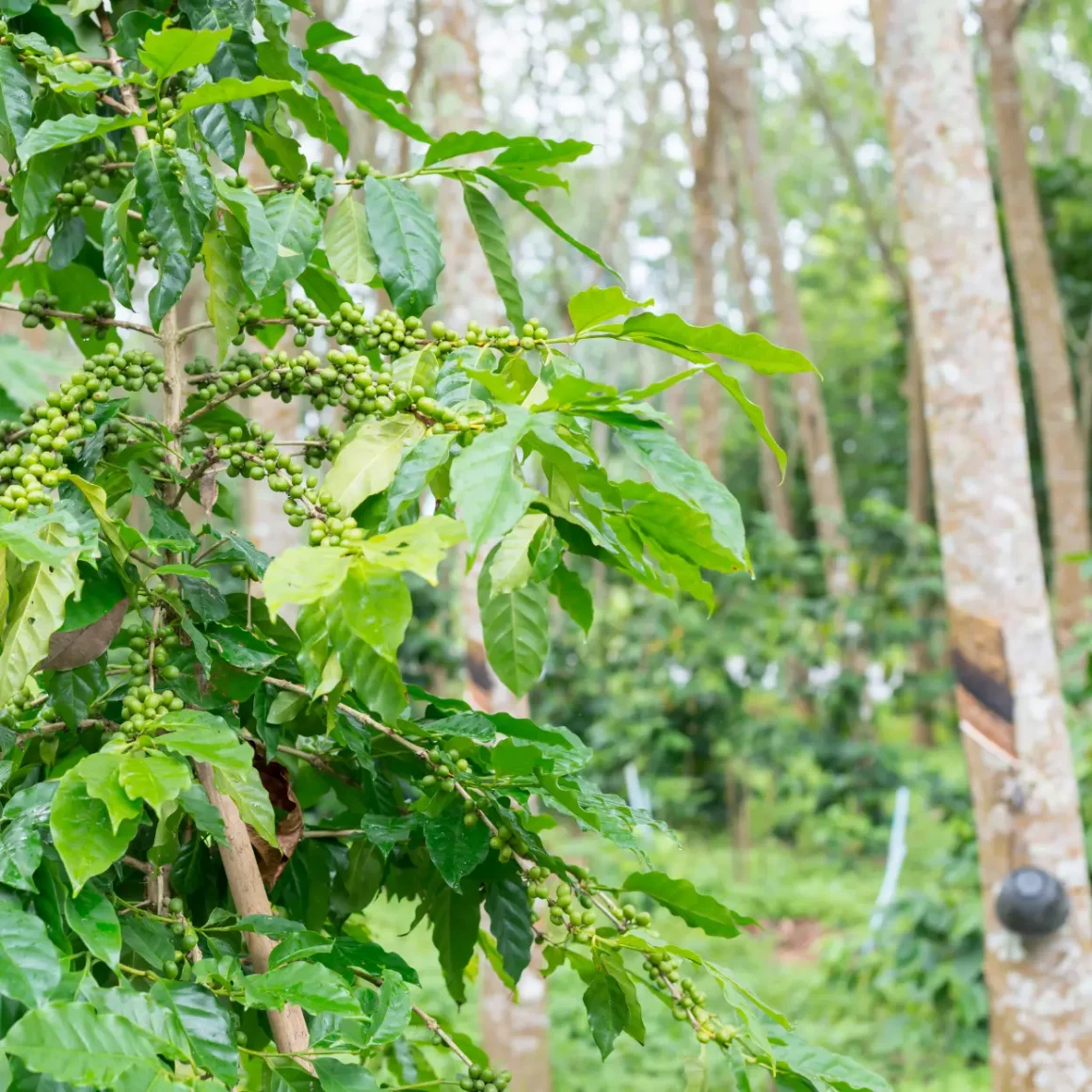
Sustainability is increasingly becoming a significant concern in the global coffee industry:
- Environmental Impact: Practices like shade-growing and organic farming are gaining traction for their benefits in preserving biodiversity and reducing chemical use.
- Economic Sustainability: Fair trade coffee initiatives and direct trade practices help ensure that coffee farmers receive a fair price for their beans, promoting economic sustainability in coffee-growing regions.
- Consumer Awareness: There is growing consumer awareness about the source and production methods of coffee, with many opting for sustainably grown and ethically sourced beans.
In a nutshell, sustainability in coffee production is not just a trend but a necessity, driving the industry towards more responsible and environmentally friendly practices.
Conclusion
In conclusion, the journey through the diverse world of light roast vs medium roast coffee reveals a fascinating spectrum of flavors and aromas, shaped intricately by the art of coffee roasting. This exploration has highlighted how light roasts offer bright, acidic, and nuanced profiles, while medium coffee roasts balance richness and complexity with a fuller body. We’ve seen how regional preferences and brewing techniques contribute significantly to these experiences, reflecting the global coffee culture’s richness. The discussion on sustainability further emphasizes the importance of conscientious practices in coffee production.
Ultimately, whether one prefers the delicate intricacies of a lighter roast or the harmonious balance of a medium roast, it is clear that coffee roasting is an art form that caters to a wide array of palates and preferences. This deep dive into the world of coffee roasts not only enriches our understanding but also enhances our appreciation for every cup we savor.
FAQ
How does the flavor profile of light roast coffee differ from medium roast?
Light roast coffee has a brighter acidity with floral and fruity notes, whereas medium roast offers a balanced profile with caramelized and nutty flavors.
Is there a difference in caffeine content between light roast and medium roast coffee?
Yes, light roast coffee generally has slightly more caffeine than medium roast due to shorter roasting times.
What are the best brewing methods for light and medium roast coffees?
For light coffee roasts, methods that allow precise temperature control like pour-over are ideal, while medium roasts are versatile and suit various methods like drip and French press.
How do regional coffee preferences influence the choice between light and medium roasts?
Regional preferences vary, with light roasts being popular in Nordic countries for their complex flavors, and medium roasts favored in Europe and North America for their balanced taste.
